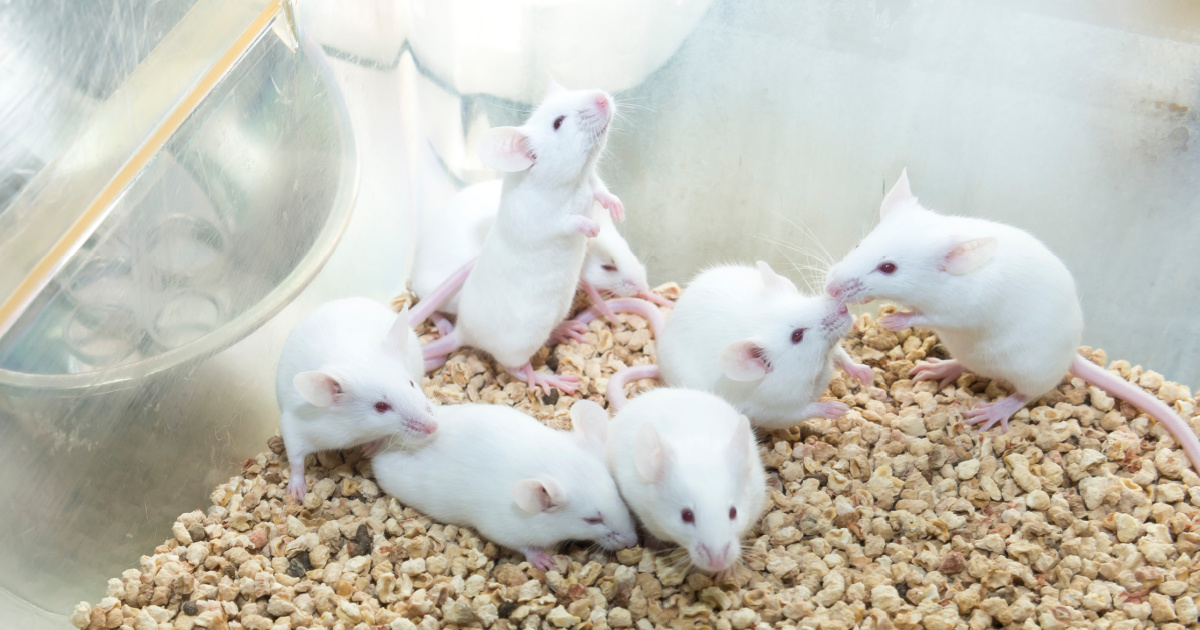
If there’s one thing human beings have been trying to figure out forever, it’s how we can craft the perfect, most happy society.
That, or how we’re going to survive the inevitable apocalypse when it arrives, probably sooner rather than later.
Now, this experiment with mice might be able to give us some insight into both.
As the global population has risen, so have concerns that our numbers will outstrip our ability to produce enough food for everyone.
The Malthusians believe that as resources dwindle, the population would somehow “control itself,” through some kind of mass death or voluntary infertility, until our numbers were back into a safe range.
So far, we’ve been able to produce more food than we consume, even if it’s not always distributed all that fairly, but climate change could cause that to change.
Behavioral researcher John B Calhoun had a different question, though: what would happen if everyone’s appetites and needs were met?
Honestly, no one could have predicted the outcome, which (according to the study) was mice eating each other and a complete breakdown of rodent society.
The most (in)famous of his experiments is known as Universe 25, for which he took four breeding pairs of mice and placed them inside a “mouse utopia.”
The environment eliminated all problems that would lead to mortality in the wild. The mice had unlimited food with enough hoppers for all, water, nesting material, optimal temperatures, and were chosen because they were healthy.
They were also protected against disease and predators (obviously).
The mice originally seemed to enjoy their free time, having lots of relations with each other instead of hunting for food and shelter. The mouse population quickly increased until there were 620 mice, and problems began to arise.
Reproduction slowed, and the mice split off into groups, though some found they were not welcome anywhere.
“In the normal course of events in a natural ecological setting somewhat more young survive to maturity than are necessary to replace their dying or senescent established associates. The excess that find no social niches emigrate.”
In the experiment they had nowhere else to go, though, and without a social role to fill, they became isolated.
“Males who failed withdrew physically and psychologically; they became very inactive and aggregated in large pools near the center of the floor of the universe. From this point on they no longer initiated interaction with their established associates, nor did their behavior elicit attack by territorial males. Even so, they became characterized by many wounds and much scar tissue as a result of attacks by other withdrawn males.”
The withdrawn males did not defend themselves during attacks, and would later perpetrate attacks on others. Their female counterparts spent all of their time grooming, avoiding the other withdrawn mice, and refusing to mate. The researchers called them the “beautiful ones.”
The “alpha male” mice became more aggressive than normal, attacking others for no reason at all, and initiated all kinds of violence that sometimes ended in cannibalism.
The utopia affected mothers, who sometimes abandoned or forgot about their young, became aggressive toward trespassers, and sometimes directly eliminated their own young. Infant mortality rate reached nearly 90% during the first phase of the “utopia’s” downfall.
The mice who did survive to adulthood never learned how to be normal mice because they were raised in a warped environment, and showed little-to-no interest in mating. So, the population began to decline from its peak at 2,200 members. The low birth rate, infant mortality, and increased violence and mice eating each other in the adult mice soon resulted in an entirely extinct colony.
The entire time, the mice had enough resources to thrive – the environment would have supported 3,000 healthy, adult individuals.
“For an animal so simple as a mouse, the most complex behaviors involve the interrelated set of courtship, maternal care, territorial defence and hierarchical intragroup and intergroup social organization.”
It was all a fast, downhill roll from there.
“When behavioral related to these functions fail to mature, there is no development of social organization and no reproduction. As in the case of my study reported above, all members of the population will age and eventually die. The species will die out.”
Calhoun believed, without a doubt, that human society would go the same way if we ever found all of our needs unexpectedly met.
“For an animal so complex as man, there is no logical reason why a comparable sequence of events should not also lead to species extinction. If opportunities for role fulfilment fall far short of the demand by those capable of filling roles, and having expectancies to do so, only violence and disruption of social organization can follow.”
Modern researchers have questioned whether or not this experiment could apply so easily to humans, though, or even whether or not Calhoun’s conclusions were accurate with the mice.
They wonder whether or not the “excessive social interaction” could have led to the mouse utopia’s demise.
Medical historian Edmund Ramsden observed in 2008 that “not all of Calhoun’s rats had gone berserk. Those who managed to control space led relatively normal lives.”
I can see going a little nuts without enough personal space.
We’ll probably never know what the result would be with human beings, unless someone puts a few of us in an isolation experiment.
Because this world of ours is unlikely to ever become a utopia in the first place.
If you thought that was interesting, you might like to read about the mysterious “pyramids” discovered in Antarctica. What are they?